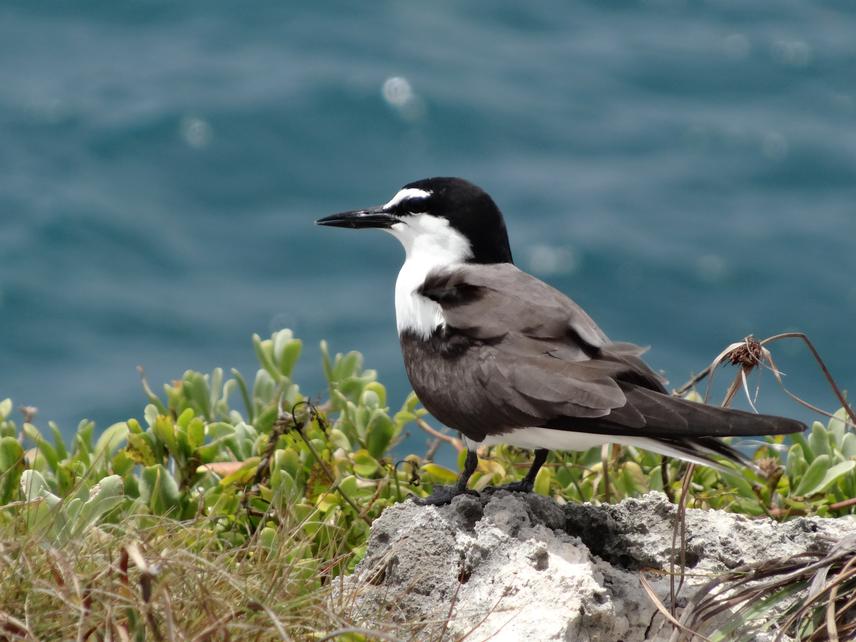Shawna Kelcia Natalya Lawrence
By the end of the project:
- 25% of Antiguans learn and appreciate the value of Antiguan racers and other wildlife.
- 20 persons gain new skills to manage and monitor Antiguan Biodiversity.

A Bridled Tern observed on an offshore island during peak nesting season. © Credit Natalya Lawrence.
Antigua & Barbuda is an island nation located in the Caribbean. The country’s Offshore Islands Conservation Programme (OICP) began 20 years ago as an emergency rescue effort by five national and international organisations to save the Critically Endangered Antiguan racer (Alsophis antiguae). By 1995, only 50 individuals of this endemic snake survived, all on Great Bird, an 8.4ha offshore island, and half of them were severely mutilated by non-native black rats (Rattus rattus). The OICP removed the rats and conducted a reintroduction programme, enabling our snake population to grow until there are now over 1,000 individuals on four offshore islands. Eradicating the rats and other alien predators has also enabled many other rare and endemic animal and plant species to recover, such as the hawksbill turtles that nest on the offshore islands. These islands are now recognized as an Important Bird Area and Key Biodiversity Area. The accessibility and great beauty of this area, however, draws a growing number of locals and tourists: even tiny Great Bird receives over 70,000 visitors annually. This increase is associated with growing risks and problems such as littering, fires, wilful killing of wildlife, alien invasive rats and mongooses, disturbance and the removal of racers as pets.
From September 2015 to August 2016, this project will strengthen conservation of offshore island wildlife and habitats by implementing an innovative outreach and capacity-building campaign that will enthuse and train more local volunteers to develop conservation management skills and encourage visitors to use the islands responsibly.
The project’s objectives are as follows:
Objective 1: Increase local capacity to conserve and monitor Antiguan racers on Offshore Islands
Objective 2: Increase public understanding of and cooperation for conserving local wildlife.
The expected outcomes stemming from the successful execution of this project include:
1. Increased local capacity to monitor Antiguan racers and other priority wildlife.
2. Increased local capacity to detect and remove AIS.
3. Decreased dependency on external expertise to conduct conservation work.
4. Reduced programme running costs as a result of the decreased dependency on external expertise.
4. Local buy-in for continued conservation work.
5. Maintained safe habitat for threatened, endemic, globally significant wildlife including Antiguan racers, West Indian Whistling-ducks (Dendrocygna arborea), and Hawksbill Turtles (Eretmochelys imbricate).
6. Improved offshore island visitor behaviour, including less littering, and visitors avoiding disturbing seabird colonies during nesting season.